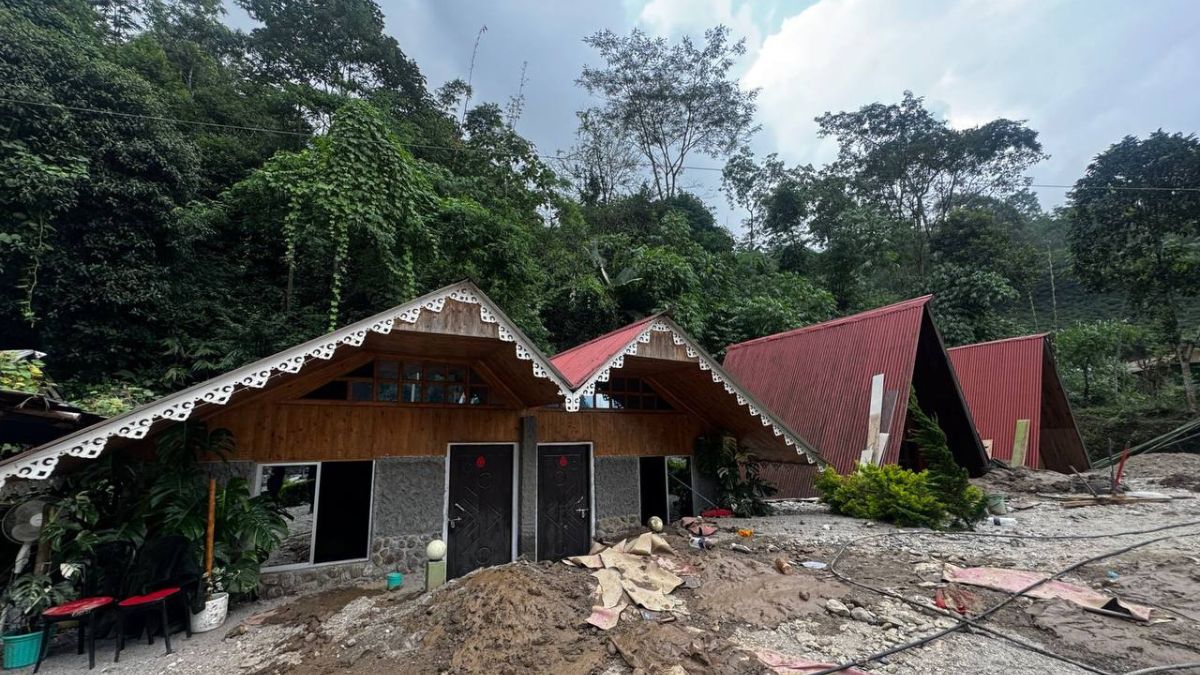Darjeeling landslides aftermath: Why affected homestay owners are optimistic about recovery

Homestays in Darjeeling and other parts of the hills in West Bengal have been impacted after torrential rains, leading to landslides in many areas on October 4—the worst that the hills have seen since 1968.
While locals say the main towns of Darjeeling, Kurseong, Kalimpong, and Mirik are not badly affected, the outskirts and connecting roads have been damaged, affecting connectivity for tourists to many parts of the hills. The worst affected areas include parts of Tabakoshi, Nagari, and Mirik.
“14 people were at my homestay on Saturday when it rained heavily, including 10 tourists, my wife, and 2 tribals. 9 tourists have been rescued by villagers and me while one student from Kolkata, Himadri is missing. I spoke to him twice on Saturday, asking him to go to higher ground and hold on to a tree as he was on the other side of the homestay. The last call was at 2:20 AM, when he said he will not be able to survive. His phone went dead after that,” explained Abhishek Gurung, owner of the five-year-old Bagar Farm Stay in Tabakoshi.
Loved by villagers for his ability to mingle as their own, 25-year-old Himadri Purkaist was sleeping in a tent on another side of the 2.5-acre homestay property. Gurung is now assisting 6 of Purkaist’s family members along with the National Disaster Response Force (NDRF) team to look for the Jadavpur University student from Kolkata.
Two cottages built from recycled plastic and cloth are still intact, as are rooms of other cottages. About 40 per cent of the property is damaged, including a natural pool.
“I also have a restaurant serving local organic food. We will start rebuilding little by little and will reopen our homestay soon too. The local administration has given us their word of rebuilding infrastructure, but I am not so hopeful,” adds Gurung.
Meanwhile, the Riverside Dwelling Homestay (on the other side of Tabakoshi) was not directly affected by the natural calamity.
“I am very lucky I was not near the river. Though we are not directly affected, road connections are cut off and we have people cancelling their stay with us since Saturday. Not just me, my staff will suffer (monetarily) if this continues. Only the local administration can help us by reconstructing infrastructure. It depends on the will of the administration,” said Sanjok Chamling.
Homestays in main towns are not affected, unlike those in offbeat locations that are tourist attractions. Many connecting roads to and from main towns are damaged, with the Dhudia steel bridge in Tukre—which offers connections to many offbeat tourist spots—having collapsed.
The administration and Army is expected to build a Bailey bridge in 15 days, while West Bengal Chief Minister Mamata Banerjee has said that the concrete bridge will be reconstructed in one year.
Mingma Girmi Sherpa, who runs a day trekking tour company called 'Dekho Darjeeling' with private and community packages for travellers, is optimistic of tourism bouncing back in the hills.
He has received no cancellations from tourists hailing from New Zealand, the United Kingdom, and Mumbai, who had made prior bookings for treks after October 19.
“I had no bookings when disaster struck. People are calling us now to ask whether the hills are safe for travel. The area was only impacted for 2-3 days. Everything is fine, under control,” Sherpa pointed out.
Many tourists who were trekking in Sandakphu came down to the plains. Sherpa goes on to say that the main towns are unaffected and alternate roads connecting Siliguri, Darjeeling, Kalimpong, Kurseng, and Mirik have reopened.
“Sandakphu was closed for 3 days but has reopened. All tourist spots like Tenzing Block, Himalayan Mountaineering Institute and Tiger Hills are open to tourists now. Connectivity is affected only in Rohini for which repair work is already taking place,” Sherpa added.
India